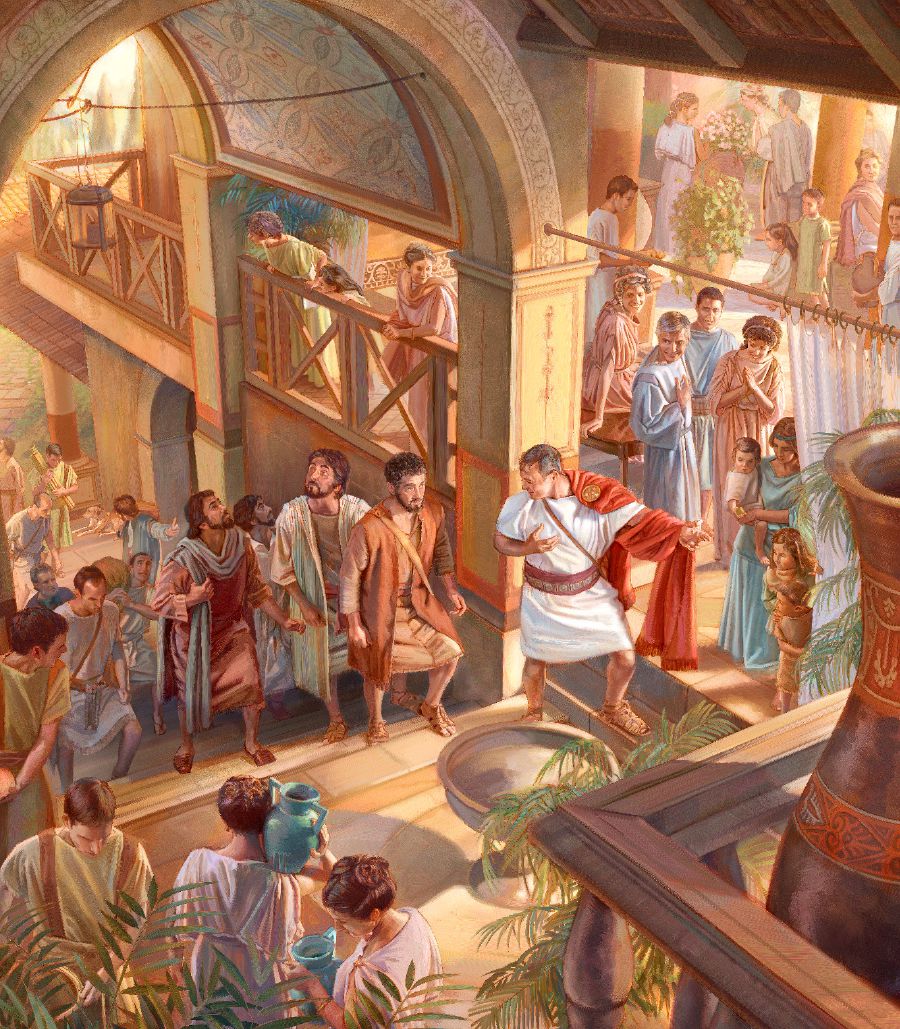Oghaạph iiḅi iinhaghạn phọ ateẹny aani ni we oomo areelhe
1-3. APita amhiịn oghẹn uḍien, kụ eeghe kụ iḍighi kụ ewạ bọ mọ yira onhaghanhạn iyaạr phọ uḍien phọ ramạ ghan bọ?
1Bạl onhụ English
2 Bạl onhụ English
3 Bạl onhụ English
“O/soph Ghan Mem Ooḅereghị Enaạn” (Iiḍighi 10:1-8)
4, 5. AKoniliọs aḍighi eeghe oye, kụ eeghe kụ imite mem dị odị raaḅereghị?
4 Bạl onhụ English
5 Bạl onhụ English
6, 7. (a) Kaạph iyaạr dị emite dị eḍeenhaan mọ Enhaạn rapagharanhaạn ghan ni iiḅereghị abuphẹ okạr bọ rowạ olhegheri igey phọ ilọ odị. (b) Yira otuughạ eeghe esi odọ areḍeenhaan phọ iphẹn phọ?
6 Bạl onhụ English
7 Bạl onhụ English
8, 9. Enhaạn aḅenhị Pita mọ aḍighi eeghe, kụ odị amhegheron ika?
8 Bạl onhụ English
9 Bạl onhụ English
10. AZihova raḍiemhiom ghan ika we phọ odị, kụ ighẹn asipuru kụ edị kewạ mọ opuruan siloor?
10 Bạl onhụ English
APita “Atọ Mọ [Oḍiinye] Bidị Muụm” (Iiḍighi 10:23b-48)
11, 12. APita aḍighi eeghe mem mọ asi bọ epẹ Sizaria, kụ odị atuughạ eeghe?
11 Bạl onhụ English

“Cornelius, of course, was expecting them and had called together his relatives and close friends.”—Acts 10:24
12 Bạl onhụ English
13, 14. (a) Iḍeenhaan eeghe iduọn aKoniliọs r’abunhọn awe areelhe phọ oru bọ oḍighi aani Kristẹn lhạ phọ 36 C.E.? (b) Uḍighi ika kụ yira ko/pogh bọ anyụ r’anyụ bịn okureri mọ oye ka/naghạn dom mọ ayira?
13 Bạl onhụ English
14 Bạl onhụ English
“Iyaạr U/ḅẹm, Uboom Ni Enaạn” (Iiḍighi 11:1-18)
15, 16. Uḍighi ika kụ abuniin aKristẹn phọ oḍighi bọ buọ aJu phọ u/meeraam bọ ipẹ aPita aḍighi bọ, kụ odị aḅẹm mọ onọ atụ eeghe kụ aḍighi bọ iduọn phọ?
15 Bạl onhụ English
16 Bạl onhụ English
17, 18. (a) Oghẹn osopha kụ edị ewạ mọ aKristẹn phọ oḍighi bọ buọ aJu phọ osopha? (b) Uḍighi ika kụ reḍighi ghan bọ ni ipaanhaạn eeni amem oḅọph onhụ siẹn ookpomhoghan phọ, kụ ighẹn asipuru kụ edị yira kopuruan siloor?
17 Bạl onhụ English
18 Bạl onhụ English
19. AKristẹn phọ oḍighi bọ buọ aJu phọ epẹ Antiọk umhiigh oghaạph iiḅi iinhaghạn phọ oḅenhị abuọ anhiạn, kụ eeghe kụ iḍuạ emite?
19 Bạl onhụ English
20, 21. Ika kụ idị aBanabạs aḍeenhaan osooromhi aloor, kụ ika kụ idị yira kotuughaạny aani eḍeenhaan phọ odị mem dị yira omite epẹ erugh phọ?
20 Bạl onhụ English
21 Bạl onhụ English
22, 23. Eeghe kụ edị aKristẹn phọ odi bọ Antiọk oḍighi oḍeenhaan mọ bunọ opomhoghiạn ni bumor r’abumaranhi phọ abidị, kụ ika kụ idị awe phọ Enhaạn rodon roḍighi aani ghan iginha phọ?
22 Bạl onhụ English
23 Bạl onhụ English
24. Ika kụ idị yira koḍeenhaan mọ yira onaghanhạn ni iyaạr phọ uḍien phọ aPita amhiịn bọ ramạ ghan bọ?
24 Bạl onhụ English

When our brothers are in need, we willingly reach out to help